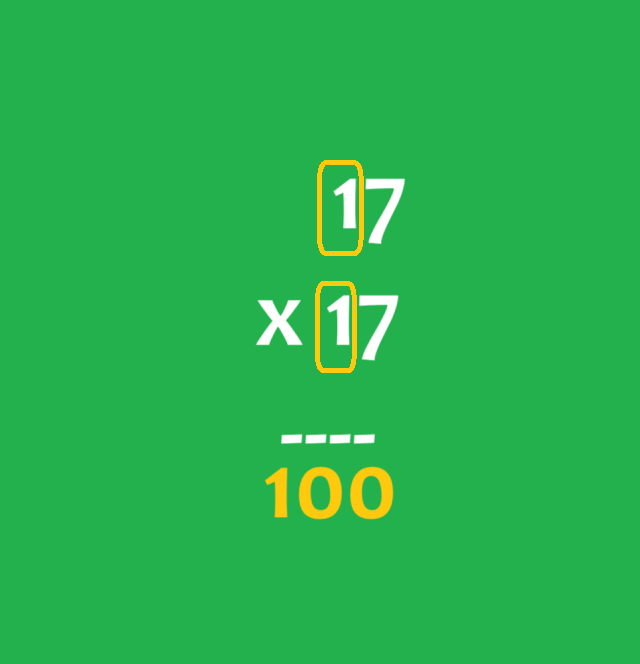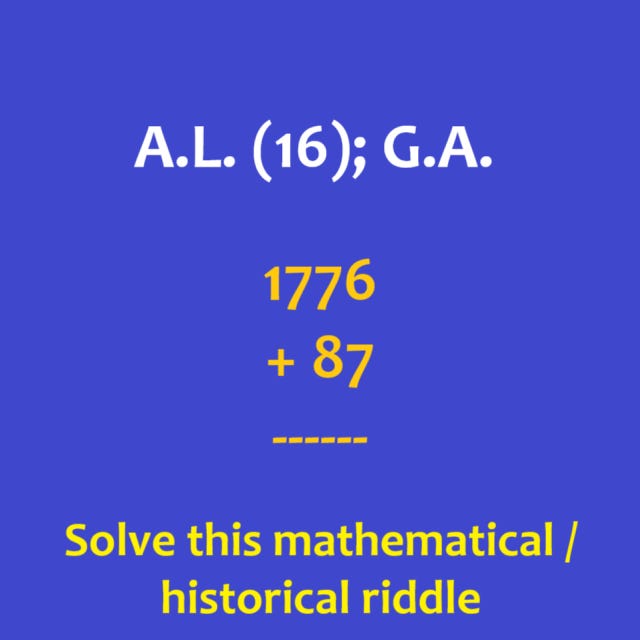Beginning Multiplication Simplified, and a Symbiotic Relationship
Simplified AMAP (As Much As Possible), That Is
In my work with 7-year-olds (2nd graders), there seems to be trepidation about multiplication (even subtraction at times).
When I challenge those who are at least somewhat interested in math to progress from addition to multiplication, I get some pushback or, if they accept the challenge, they treat it as an addition problem and work it out as such. For example, for 17 X 17, they write the number 17 seventeen times and then add them all up. Sometimes (after a long, arduous mental workout) they come up with the right answer, but I tell them there is a shortcut I can show them to make arriving at the answer less tedious and quicker. Here it is:
You can turn the multiplication problem into a less wieldy addition challenge if you either 1) Have the multiplication table (up to, say, 10 X 10) memorized or, 2) Have one handy to reference as needed, such as:
You then multiply each single number of the multiplier (the number on the bottom) by each single number of the multiplicand (the number on top). In the multiplication challenge we will examine as an example, both the multiplicand and the multiplier are 17:
Now multiply each individual number of the multiplier by each individual number of the multiplicand, one by one. First, multiply 7 X 7:
…which gives you 49 (your memory or your multiplication table should tell you so).
Then, multiply the 7 in the multiplier by the 10 in the multiplicand (the numbers on the right are in the “1s column,” and the number to its left is in the “10s column,” so a “1” in the “10s column” is a 10).
Now we’ve multiplied all the individual numbers in the multiplicand by 7, so follow the same process with the next (other) number in the multiplier, namely the 10: First, multiply 10 by 7 (which, of course, gives the same result as the 7 times 10 above does):
…and then, for the coup de grâce, multiply the 10 from the multiplier by the 10 in the multiplicand:
…and you get 100.
The final step is to add all these interim answers together, like so:
And voila! (which means “yes” or “wow!” or “aha!” or “Eureka!” or “that was an epiphany!”) — as you can see, the answer to 17 x 17 is 289. By following the pattern shown above, you can easily (relatively easily, anyway) multiply any two numbers, up to 99 x 99 (spoiler alert: the answer to that is 9,801):
9x9 = 819x90 = 81090x9 = 81090x90 = 8,100There is still addition involved, it’s true, but this way there are only four numbers to sum rather than 17 (only 23.53 % as many).
The next step (once you’re comfortable with multiplying two-digit-numbers) is to work with three-digit numbers, such as 100 and higher. It really isn’t that difficult, though, if you remember or realize that the next column to the left is the “100s column,” and proceed with those calculations accordingly.
HOWEVER (THERE’S ALMOST ALWAYS A ‘HOWEVER’)
There is an easier way to multiply, but it’s a way that won’t give your brain much exercise, and only works if you have an electronic device such as a cell phone or a (larger, bulkier) computer handy (but the kids at “my” school [Monte Vista TK-8 in Monterey, California] aren’t allowed to have cell phones [a rule I wholeheartedly applaud] and they don’t typically have ready access to computers either (while at school, that is).
That easier way to solve all sorts of math problems is by means of a calculator. For example, I used my laptop’s calculator app to come up with the 23.53% figure above.
Besides the calculator available on your cell phone:
… or laptop:
… you might have the (now “old-school”) handheld version of a calculator. The “hand calculator” was not called such because it calculates your hand (or anyone else’s hand or hands, for that matter), but because it fits in your hand (prior to the advent of these “handy” devices, calculators barely fit inside a large room (that is to say, the original manmade calculators were enormous, humongous computers)).
The best calculator of all, though (which you have with you at all times and which you received free of charge), fits inside your head. It’s your brain. You will never forget your brain — everywhere you go, you take it with you.
Your brain is good for math, and math is good for your brain. That’s called a symbiotic relationship.
A followup article on division can be found here.
A BONUS RIDDLE OR CONUNDRUM (OR “ROMPECABEZA,” WHICH MEANS “PUZZLE” BUT IS LITERALLY “BREAK HEAD” IN SPANISH)
While we’re on the subject of math, here is a riddle which combines knowledge of American history, math, and logic.
Whoever is the first to explain this riddle will win the planet Jupiter as a prize (as soon as I acquire it, that is) — but I will retain the mineral rights.















